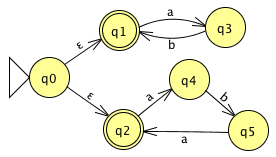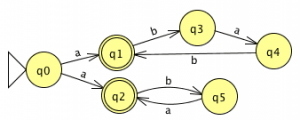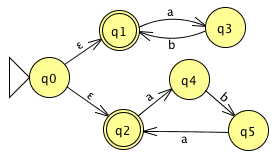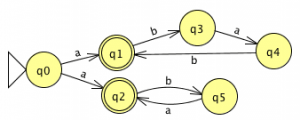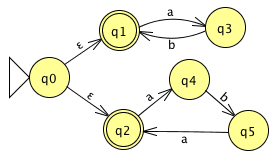Non-Deterministic Finite Automata
1.
a(bab)*∪a(ba
2.
Which is the correct NDFA for the following mentioned expression?
(ab)*∪(aba)* 3.
NDFAs where introduced by ____________
4.
The regular languages are not closed under ___________
5.
The Tuples for NDFA is ___________
6.
NFAs are ________ DFAs.
7.
An NFA’s transition function returns ________
8.
Which NDFA correctly represents the following RE?
a(bab)*∪a(ba)* 9.
A ε transition takes no input and represents a pure nondeterministic choice of being in the state or the target state without having done any processing.
10.
The regular languages are not closed under ___________

